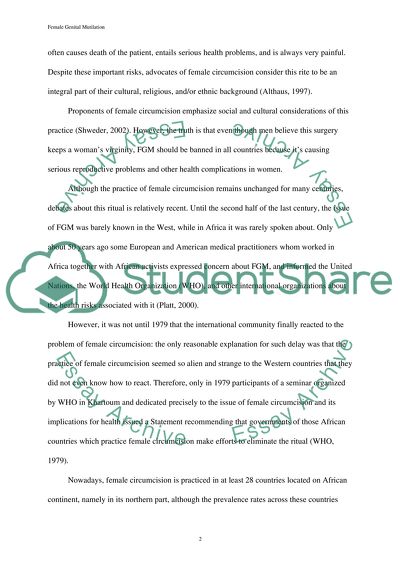Cite this document
(“Female Genital Mutilation Essay Example | Topics and Well Written Essays - 2000 words”, n.d.)
Retrieved from https://studentshare.org/history/1509857-female-genital-mutilation-essay
Retrieved from https://studentshare.org/history/1509857-female-genital-mutilation-essay
(Female Genital Mutilation Essay Example | Topics and Well Written Essays - 2000 Words)
https://studentshare.org/history/1509857-female-genital-mutilation-essay.
https://studentshare.org/history/1509857-female-genital-mutilation-essay.
“Female Genital Mutilation Essay Example | Topics and Well Written Essays - 2000 Words”, n.d. https://studentshare.org/history/1509857-female-genital-mutilation-essay.


